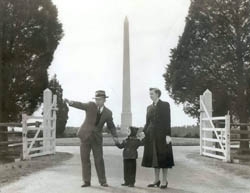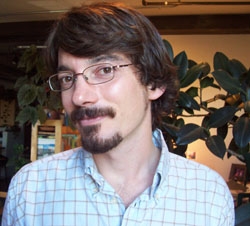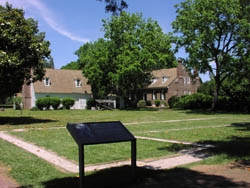What we talk about when we talk about the past
Temple historian examines the making of meaning at historic sites
“At which table did Benjamin Franklin sit when he signed the Declaration of Independence?” That’s a common question posed by tourists at Philadelphia’s Independence Hall. Visitors to the venerable building want to know what the past was really like. But, according to Seth Bruggeman, they should also be asking what story is not being told.
“Tourists and visitors to historic sites should think critically about the interpretive messages they receive,” said Bruggeman, assistant professor of history and American studies and coordinator of the Public History Program in Temple’s College of Liberal Arts. “Historic sites should be interrogated for what they reveal about how we remember.”
In his book, Here, George Washington Was Born: Memory, Material Culture and the Public History of a National Monument (University of Georgia Press), Bruggeman examines the history of commemoration in the United States by looking closely at the birthplace of George Washington. His analysis demonstrates that there is no single way of remembering an event or person and that by scrutinizing the places where we gather to commemorate the past, such as historical sites and monuments, we can learn about ourselves.
Bruggeman’s interest in Washington’s birthplace began with a part-time job he took as a graduate student to write an administrative history of the George Washington Birthplace National Monument in rural Virginia. In the process, he tackled the question of what, if any, significance lays in the Pope’s Creek Plantation where Washington spent the first three years of his life.
Sifting through decades of National Park Service records regarding an 80-year-long controversy, Bruggeman reconstructed an odd sequence of events that illustrates how issues of race and gender become central to efforts at commemoration. The original house of Washington’s birth had burned down in 1779, and no one knew with certainty where it had been located or what it looked like. Nonetheless, in 1932 a patriotic ladies group known as the Wakefield National Memorial Association spearheaded the construction of a replica. Upon the discovery of the original foundation a year later, it was determined that the replica’s location, orientation and design were all wrong.
“My book is an attempt to make sense of the long debate that unfolded about what to do with the bogus replica and what its historical meaning really is,” explained Bruggeman. “It’s a story about what happens when the way we want to remember history does not coincide with the reality of that history. We learn interesting things in these moments and one is that history becomes immediately political.”
For example, said Bruggeman, the National Park Service and the Memorial Association began to vie for control of the meaning of the replica, with the ladies’ group continuing to argue for it’s authenticity in spite of the evidence to the contrary.
Similarly, the commemorative efforts of the park service in response to the bogus replica tell us quite a bit about how our nation dealt with race in the 1930s. According to Bruggeman, in an interesting turn, the Park Service director became so frustrated with the inaccuracy of the replica that he decided to divert attention from it by creating a living farm on the site. In so doing, he hired Ananais Johnson, the last slave born on the Washington family plantation to work on the living plantation.
The farm was an innovative idea, and the crowds loved it; but it reduced Johnson to a museum object to be consumed by visitors, said Bruggeman. “Using Johnson to interpret agricultural practice played into a misguided understanding of the history of slavery and came to affirm antebellum notions of the Good Ol’ South.”
And this, said Bruggeman, is the lesson of the history of Washington’s birthplace. “Negative stereotypes and antiquated ways of thinking about the past can be easily reified at museums and historic sites if we are not careful about thinking about why we talk about the past in the way that we do.”


